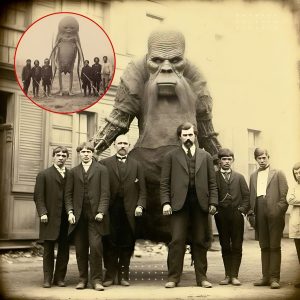Ancient mummies have always been a fascinating mystery that has captivated human curiosity for centuries and served as an endless source of inspiration for films. However, they do not only come from the ancient Egyptian civilization but also appear in many other places around the world. After many years of searching, there are numerous mummies that contain formidable mysteries, leading many to propose incredible hypotheses.
It has been nearly 100 years since British archaeologist Howard Carter discovered the long-lost tomb of Tutankhamun (also known as King Tut), the most famous pharaoh of ancient Egypt.

Within the tomb, an incredible collection of thousands of artifacts from the ancient Egyptian world was found. Most notably, a stone sarcophagus containing three nested coffins. Among them, the innermost coffin was made of solid gold and contained the mummy of the young King Tutankhamun, preserved in darkness for over 3,000 years. However, shortly after this world-shaking discovery was announced, the story of the “Legendary Curse of the Pharaohs” began to gain fame as most of the people involved in the excavation mysteriously died.

In 2021, a deadly train accident and fires across the country, along with the Suez Canal being blocked by the Ever Given ship, were also attributed to this dreaded curse, as these incidents occurred around the same time 22 mummies from the tomb were being moved to another museum.
The 3,000-Year-Old Screaming Mummy
In 1881, archaeologists discovered a terrifying mummy while working in the valley of Deir El Bahri, about 500 kilometers from Cairo, Egypt. It was found that the burial place of this mummy was very close to the tomb of the royal lineage. However, instead of being wrapped in white linen with spices and treasures, the body was wrapped in animal skins, covered with a layer of lime, and the internal organs were left intact.
.webp)
Notably, this mummy remained unidentified. According to DNA test results taken from the teeth of the remains, the mummy was identified as Prince Pentawere, the son of Pharaoh Ramesses III, who ruled from 1186 to 1155 BC.
Prince Pentawere was known to have committed a grave sin by conspiring to usurp his father’s throne by murdering him. After being discovered, Pentawere was sentenced to death or forced to commit suicide. Based on some scratches on the neck of the mummy, scientists confirmed that this Egyptian prince died by hanging. This also explains why his mummy was not treated like those of other royals.
The Cocaine Mummy
When the remains of Pharaoh Ramesses II, who ruled Egypt from 1279 to 1213 BC, were analyzed in the 1970s, scientists discovered an astonishing secret within the mummy’s wrappings.
.webp)
They found evidence of cannabis and tobacco in the mummy. Even more remarkably, these scientists discovered traces of cocaine inside the body of the king. Notably, these substances are believed to have been introduced to Europe around the 15th century, long after the existence of the pharaohs. Therefore, scientists still have not found a satisfactory answer to the question: How was there intercontinental trade 3,000 years ago?
The Time-Traveling Mummy with Trendy Adidas Shoes
In 2016, a strange mummy was found at an altitude of around 10,000 feet in the remote Altai Mountains of Mongolia. The mummy was identified as a woman aged between 30 and 40. Experts from the Mongolian Center of Cultural Heritage believe the woman died 1,100 years ago after suffering a severe head injury.
.webp)
The most astonishing aspect that left archaeologists “wide-eyed” was the shoes the mummy was wearing, which closely resembled red Adidas sneakers with the brand’s iconic three white stripes. This immediately led to various theories about the existence of these “branded” sneakers, with some even suggesting that the mummy was a sign of time travel.
.webp)
In addition to the shocking shoes, scientists also found other items including a handbag, four sets of clothing, a personal knife, a comb, and a mirror. All these items were remarkably well-preserved due to the cold, high-altitude conditions.
.webp)





